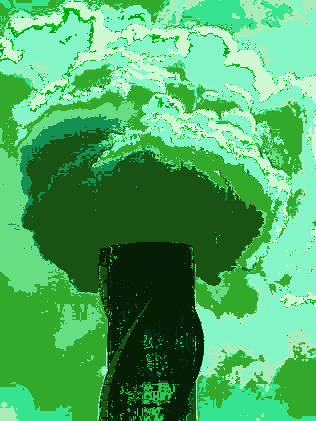Direct action starts amid questions over effect
 Federal Government's first Direct Action auction is on this week, but analysts say the scheme simply will not work.
Federal Government's first Direct Action auction is on this week, but analysts say the scheme simply will not work.
The Government's Direct Action climate policy is its replacement for the carbon tax.
The plan is centred around the Emissions Reduction Fund (ERF), a bank that will pay companies to attempt to reduce their pollutant emissions.
The ERF will directly pay polluters $2.5 billion of taxpayers' money not to pollute and promote carbon-sequestration measures.
The most popular of these measures is the practice of ‘carbon farming’, whose proponents are expected to jump on the auction this week.
The auctions will be conducted in reverse, with individuals or businesses putting up bids for how much carbon pollution they can reduce, along with a price per tonne.
For example, one might offer to try to reduce 5,000 tonnes of carbon, for a price of $20 per tonne.
The Government's Clean Energy Regulator (CER) will set a ceiling price, anywhere from $5 to $25 per tonne of carbon, to govern the auction.
Contracts will then be awarded to projects that promise the greatest carbon reduction for the lowest price.
There is concern that by taking the cheapest route, the Government will miss out on genuinely useful carbon reduction.
But the price is forced down by the fact that the scheme has a cap, and will stop paying for projects of any kind once it has handed out $2.5 billion.
But analysts have modelled the outcomes of the Direct Action auctions and projects, and they can not see the scheme working.
Analysts at RepuTex - a group that provides energy and carbon market analysis – said it is a gamble as to whether Australia might meet its 2020 target of a 5 per cent reduction in emissions from 2000 levels.
“At this point we think the Emissions Reduction Fund falls short of achieving that emissions reduction target, and falls short by quite some way,” said Hugh Grossman, executive director of RepuTex.
“Best case scenario, we see the Emissions Reduction Fund purchasing about 50 per cent of Australia's abatement task, about 120 million tonnes.
“At worst, the ERF will purchase around 20 per cent.
“If the [carbon] price is high, we're going to see companies actively want to reduce their emissions and ... participate in the market, so that's ultimately a good thing.
“Ultimately, how the regulator elects to set that price will effectively determine the success or failure of the scheme,” Mr Grossman said.








 Print
Print